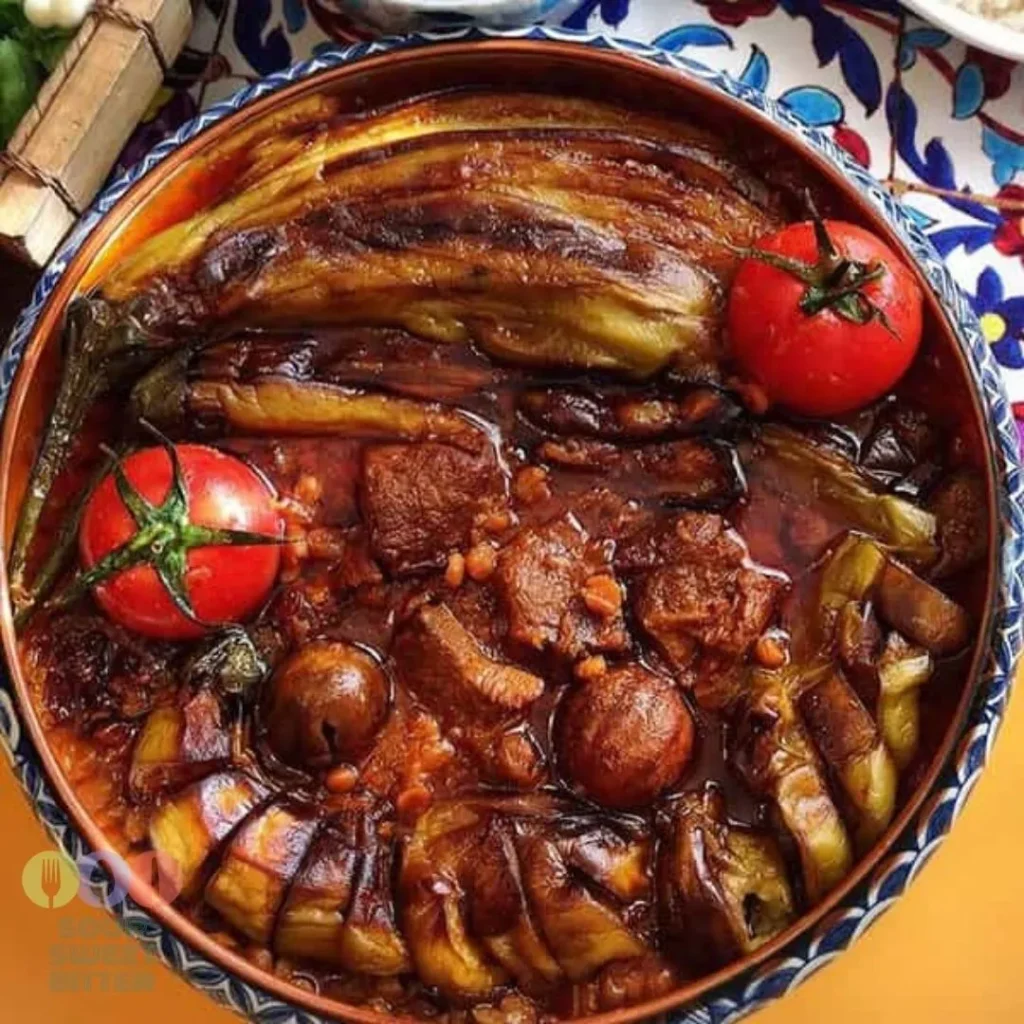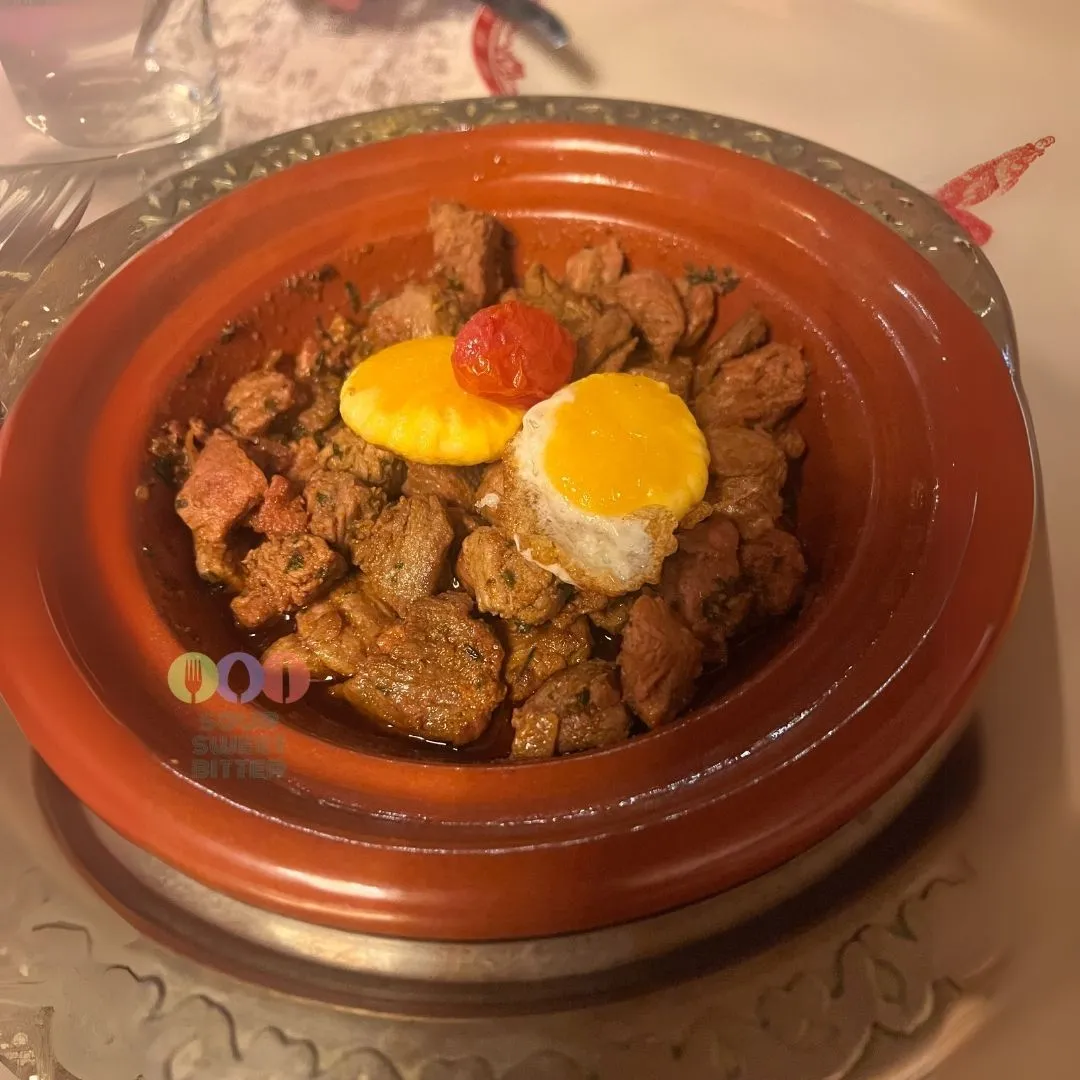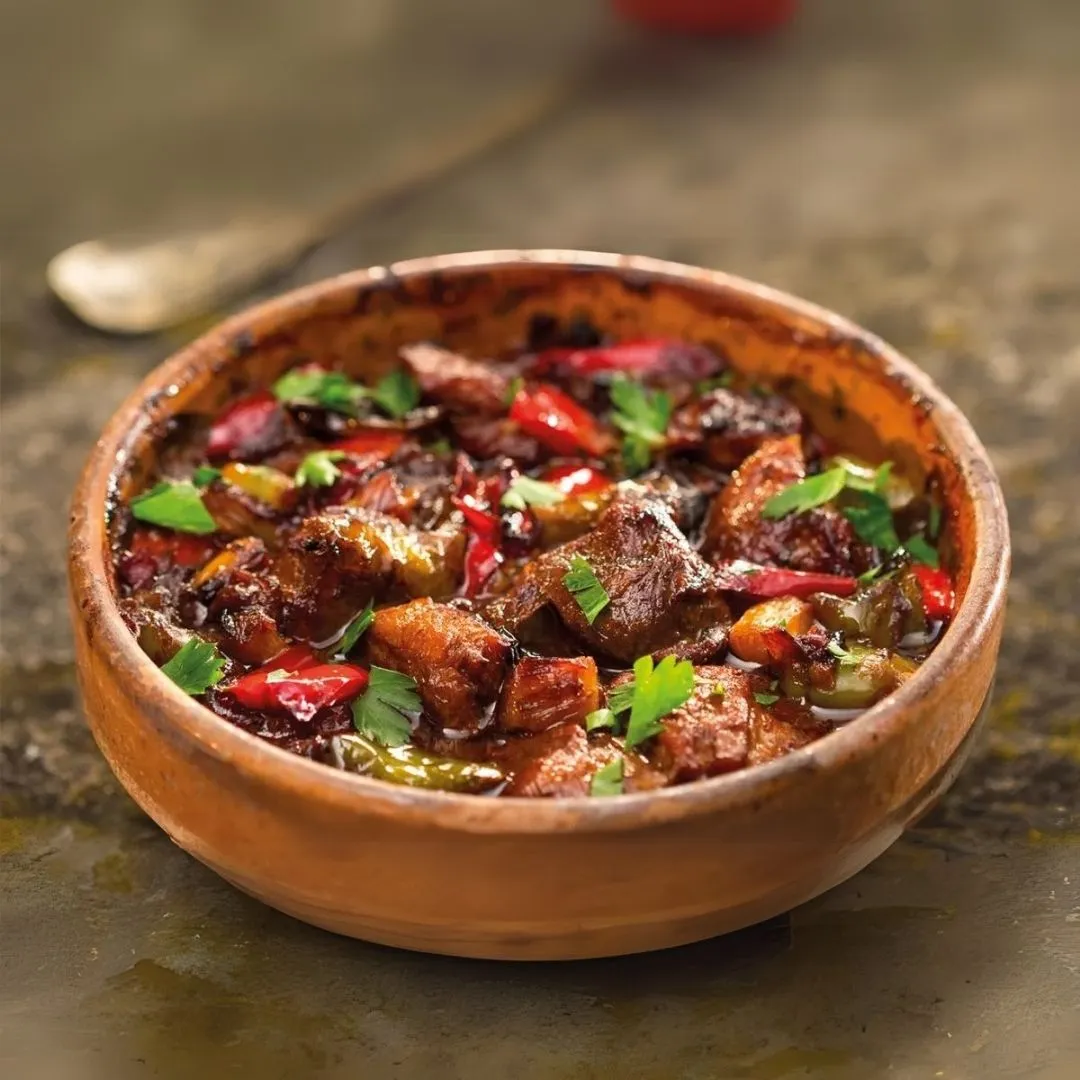The Timeless Allure of Iranian Khoresh Bademjan
Khoresh Bademjan, or Persian Eggplant Stew, stands as a beacon of Iran’s rich culinary heritage. This beloved dish, celebrated for its flavorful depth and cultural significance, reflects centuries of Persian gastronomy. Let’s uncover the history, tradition, and artistry behind this iconic stew.
A Culinary Journey Through Time
The origins of Khoresh Bademjan trace back to the medieval era when eggplants were introduced to Persia via trade routes from India. Over centuries, Persian chefs elevated this unassuming vegetable, crafting a dish that embodies the region’s love for balanced and sophisticated flavors.
Eggplants: The Star Ingredient of Persian Cuisine
Known as “bademjan” in Farsi, eggplants are a cornerstone of Iranian cooking. In Khoresh Bademjan, they are either fried or roasted, creating a velvety texture that melds seamlessly with tender cuts of lamb or beef. The addition of tart sun-dried limes (“limoo amani”) or pomegranate molasses enhances the dish’s signature sweet-and-sour profile.
A Celebration of Tradition and Togetherness
Khoresh Bademjan is more than a meal—it’s a symbol of Iranian hospitality and familial bonds. Traditionally served alongside fragrant saffron rice (“chelo”), it graces tables at festive gatherings, from Nowruz celebrations to intimate family dinners. Each family’s recipe carries unique nuances, passed down through generations with pride.
Innovation Meets Tradition
While steeped in history, Khoresh Bademjan has also adapted to modern tastes. Vegetarian variations featuring chickpeas or mushrooms offer inclusive options, while contemporary chefs explore new spices to reimagine its classic appeal. Despite these innovations, the dish remains a steadfast tribute to Persian culinary traditions.
The Healthful Essence of Khoresh Bademjan
Beyond its delicious taste, this dish offers a host of health benefits. Eggplants, tomatoes, and herbs combine to create a nutrient-rich stew packed with antioxidants, fiber, and vitamins. It’s a dish that nourishes the body as much as it delights the senses.
Experience Persian Hospitality
Preparing Khoresh Bademjan is an invitation to embrace Iranian culture. Cooking this dish fosters connection, while sharing it reflects the warmth and generosity intrinsic to Persian hospitality. Whether crafted at home or savored at a Persian restaurant, Khoresh Bademjan offers a culinary journey through one of the world’s oldest cuisines.
Rekindle the Tradition in Your Kitchen
Inspired to try your hand at Khoresh Bademjan? Gather fresh ingredients, find a cherished recipe, and immerse yourself in the joy of Persian cooking. This dish is more than sustenance—it’s a living testament to the enduring beauty of Iranian culture and cuisine.
Discover Traditional Iranian Recipes Discover Traditional Recipes from Asia You may like this also: Italian Melanzane Ripiene
Iranian Khoresh Bademjan
Instruction
Khoresh Bademjan is a traditional Persian stew made with eggplant, tomatoes, and lamb or beef. It is often served with saffron rice and is known for its rich and tangy flavor.
Ingredients
Instructions
-
To prepare delicious and festive eggplant stew, first peel the onions and chop them into small pieces, then add them to the pot you have intended for cooking the stew with some liquid oil and fry well until the onion becomes soft and transparent.
-
Next, add some turmeric spice and fry the onion for a few more minutes until it becomes uniform with the turmeric. In the next step, after washing and rinsing, chop the stewed meat into minced meat (like minced meat stew) and add it to the stew pot.
-
You only need to fry the meat a little until it changes color, because frying the meat too much will make it tough and slow-cooked. After the meat changes color, add the tomato paste and fry it a little until the raw taste and smell of the tomato paste is removed.
-
Note that roasting the tomatoes will make the stew more colorful at the end. Next, add 3 cups of water to the pot and increase the heat under the pot so that the water boils faster.
-
After the water boils, reduce the heat to cook the meat on low heat for one and a half to two hours. While the meat is cooking, you can prepare the eggplants. For this purpose, peel the eggplants and cut them lengthwise into two parts.
-
Next, arrange the eggplants on a tray and sprinkle some salt on them. In addition to removing the bitterness of the eggplants, this will make the eggplants absorb less oil when frying. Rinse the eggplants after 30 minutes.
-
Now after drying the eggplants, fry them in oil. Place the fried eggplants on a paper towel to remove excess oil. At the same time, cut the tomatoes in half and fry them a little until they are browned.
-
Add spices and saffron.
-
Your traditional Persian Khoresh Bademjan is ready. اشتهای مبارک!














